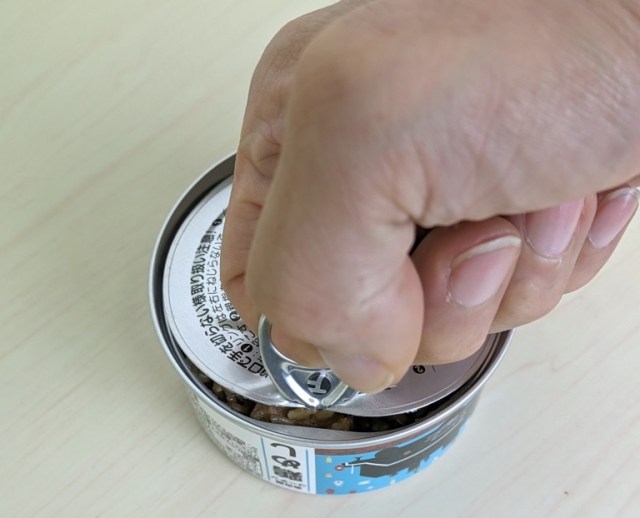
There’s only one station in Japan where you can find these canned versions of famous boxed lunches.
If you’re looking for evidence to support the statement that what makes travel truly special isn’t the destination, but the journey, you’ll find plenty of it in the form of Japan’s ekiben. A contraction of eki bento, meaning “station boxed lunches,” ekiben are pre-packaged meals featuring local delicacies. For foodies, grabbing an ekiben from a station shop and then enjoying it on the train, watching the scenery drift by as you eat, can be as memorable as any sightseeing spot on your itinerary.
Since just about every part of Japan has a special representative ingredient or recipe, there’s a wide variety of different things you’ll find inside different ekiben. The one thing all ekiben have in common, though, is that they’re boxed. So imagine our surprise when we came across…ekiben in cans?!?
▼ 駅弁缶 = ekiben can
We found these inside Tokyo’s Shimabashi Station, at a canned foods specialty shop called Cannederful (Japan will never pass up an opportunity to make a pun), which is the only place they’re available. There’s a certain logic to that, since Shimbashi was the first station on Japan’s very first passenger train line, which opened in 1872 and connected Tokyo with Yokohama, two cities to the south.
▼ “Shimbashi exclusive” says the text on the base of the cans.
However, the inspiration for the contents of the canned ekiben doesn’t come from Tokyo or Yokohama, but rather from two popular station boxed lunches sold further west. One of them is Nagoya Kochin Tori Meshi, a chicken and rice bento sold in Nagoya that uses kochin, a local chicken breed prized for its meaty texture and sweet succulence. The other is Tajima Beef Gyumeshi, a beef and rice ekiben popular in Hyogo Prefecture (the same prefecture as Kobe). Like Nagoya kochin, Tajima beef is known for its delicious and well-balanced flavor.
The canned ekiben sell for 899 yen (US$6) each or 1,799 yen as a set. After taking a moment to appreciate the whimsical steam locomotive illustrations on the labels, our reporter Mr. Sato, who’d drawn taste-test duties, cracked them open, starting with the Nagoya torimeshi.
Ordinarily, a Japanese boxed lunch consists of a main dish, rice, and some sides. In the case of Cannederful’s canned ekiben, though, you just get the main dish and the rice. Still, the visuals immediately got Mr. Sato’s mouth watering, with more chicken than he’d been expecting.
The flavor delivered on the promise made by that delicious appearance, too. For torimeshi, the rice and chicken are cooked together, and this means the subtly sweet notes of the kochin7s flavor profile had seeped into the rice. Add in the bonito and kombu stock seasonings, and it makes for a simple but very satisfying eating experience.
Moving on to the Tajima gyumeshi, this too is a dish where the meat and rice are cooked together. Neither Nagoya kochin nor Tajima beef are particularly cheap, so once again Mr. Sato was pleasantly surprised by how much meat there is.
The flavor is a little fancier here, with sake, mirin (a sweeter sake used only for cooking), and soy sauce moromi (a sort of fermented soy sauce). Still, it’s a delicate mix of flavors, each coaxing your taste buds into noticing them without aggressively demanding their attention.
Though the canned ekiben didn’t deliver the variety you get with an actual boxed lunch, Mr. Sato was more than pleased with both of them. They’re not flashy or decadent, but they both have an old-school, rustic simplicity to them. He could imagine these being the kinds of meals he’d have eaten had he been travelling across the country back in the old days, riding a train like the ones on the cans’ labels, and if a tin of canned food can take you on that sort of imaginative mental journey, it’s a taste trip he’s happy to make.
Related: Cannederful official website
Photos ©SoraNews24
● Want to hear about SoraNews24’s latest articles as soon as they’re published? Follow us on Facebook and Twitter!
[ Read in Japanese ]

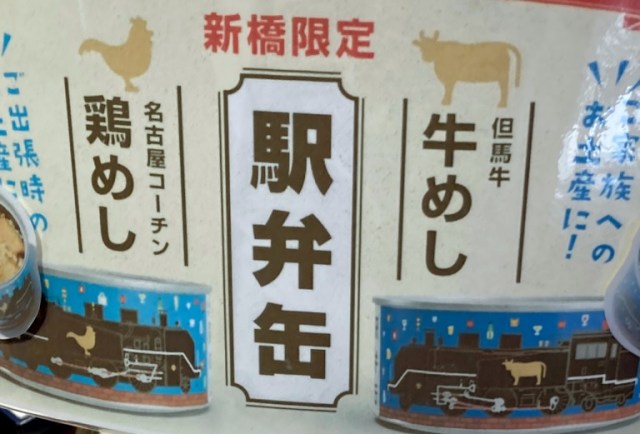
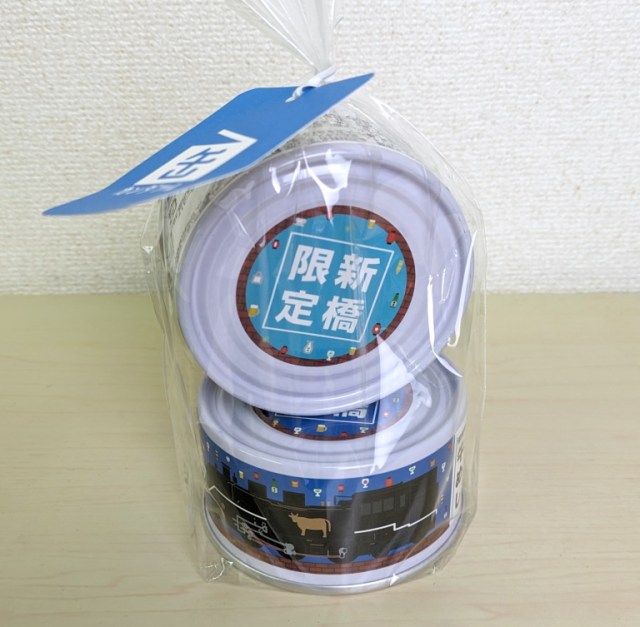
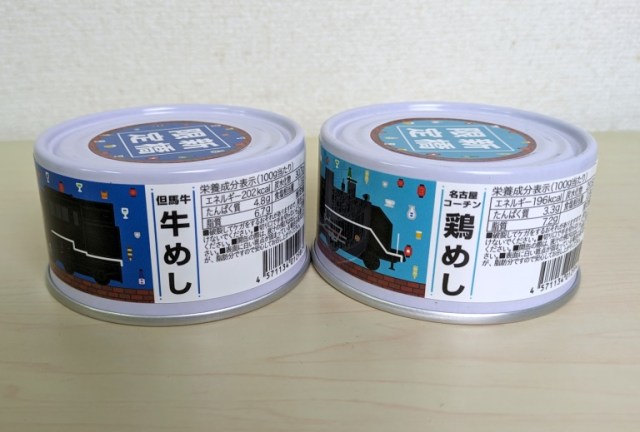

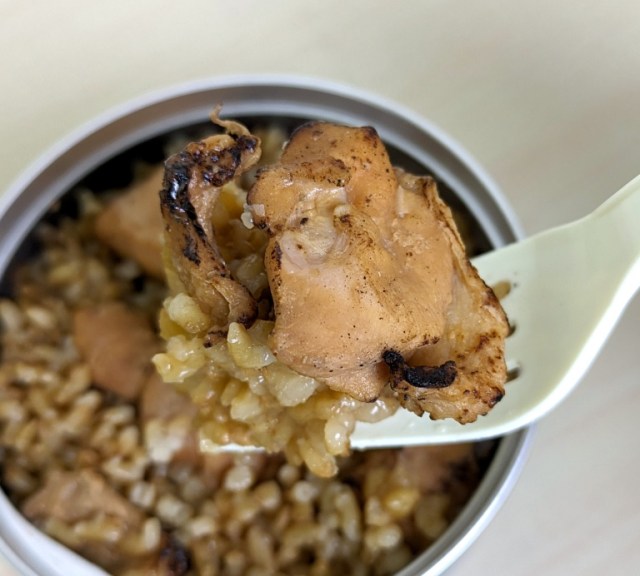
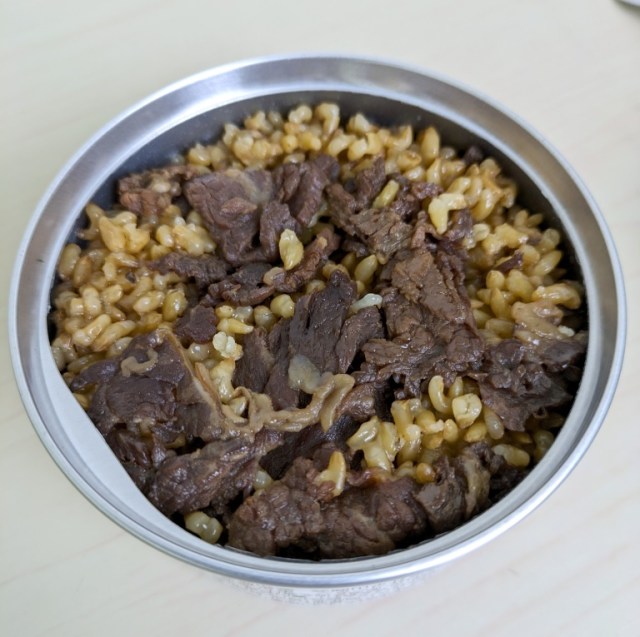
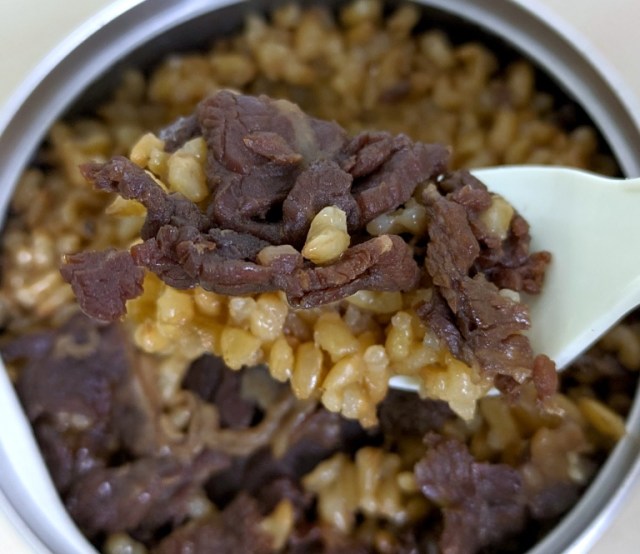
 Hungry and on the go? Top 10 ranking of ekiben at Tokyo’s Shinagawa Station
Hungry and on the go? Top 10 ranking of ekiben at Tokyo’s Shinagawa Station The 5 best Japanese bento to buy at Kyoto Station
The 5 best Japanese bento to buy at Kyoto Station Japan’s top train station bento boxed lunches for 2016, as picked by travelers
Japan’s top train station bento boxed lunches for 2016, as picked by travelers Japanese boxed lunches pulling into France at authentic bento stand opening in Paris station
Japanese boxed lunches pulling into France at authentic bento stand opening in Paris station Cute ekiben station bento looks like it’s from Japan but it’s from a different place entirely
Cute ekiben station bento looks like it’s from Japan but it’s from a different place entirely Foreigner’s request for help in Tokyo makes us sad for the state of society
Foreigner’s request for help in Tokyo makes us sad for the state of society McDonald’s Japan’s new pancake pie is a taste sensation
McDonald’s Japan’s new pancake pie is a taste sensation Studio Ghibli unveils massive T-shirt collection featuring top anime movie characters
Studio Ghibli unveils massive T-shirt collection featuring top anime movie characters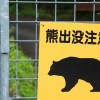 Bear attacks car in Japan, breaks windshield with its paw【Video】
Bear attacks car in Japan, breaks windshield with its paw【Video】 FUK COFFEE?!? Japanese cafe has a perfectly innocent reason for its startling-looking name
FUK COFFEE?!? Japanese cafe has a perfectly innocent reason for its startling-looking name One of Japan’s oldest castles now lets travelers spend night on the grounds, drink in its keep
One of Japan’s oldest castles now lets travelers spend night on the grounds, drink in its keep Princesses, fruits, and blacksmiths: Study reveals the 30 most unusual family names in Japan
Princesses, fruits, and blacksmiths: Study reveals the 30 most unusual family names in Japan Two things to do, and two things not to do, when leaving a traditional Japanese inn
Two things to do, and two things not to do, when leaving a traditional Japanese inn Bad tourist manners at Mt Fuji Lawson photo spot prompts Japanese town to block view with screens
Bad tourist manners at Mt Fuji Lawson photo spot prompts Japanese town to block view with screens Yakuza lieutenant arrested in Tokyo for stealing Pokémon cards
Yakuza lieutenant arrested in Tokyo for stealing Pokémon cards Japanese ramen restaurants under pressure from new yen banknotes
Japanese ramen restaurants under pressure from new yen banknotes Red light district sushi restaurant in Tokyo shows us just how wrong we were about it
Red light district sushi restaurant in Tokyo shows us just how wrong we were about it McDonald’s new Happy Meals offer up cute and practical Sanrio lifestyle goods
McDonald’s new Happy Meals offer up cute and practical Sanrio lifestyle goods Tokyo Tsukiji fish market site to be redeveloped with 50,000-seat stadium, hotel, shopping center
Tokyo Tsukiji fish market site to be redeveloped with 50,000-seat stadium, hotel, shopping center Japanese city loses residents’ personal data, which was on paper being transported on a windy day
Japanese city loses residents’ personal data, which was on paper being transported on a windy day Beautiful Red and Blue Star luxury trains set to be Japan’s new Hokkaido travel stars
Beautiful Red and Blue Star luxury trains set to be Japan’s new Hokkaido travel stars Ghibli Park now selling “Grilled Frogs” from food cart in Valley of Witches
Ghibli Park now selling “Grilled Frogs” from food cart in Valley of Witches New definition of “Japanese whiskey” goes into effect to prevent fakes from fooling overseas buyers
New definition of “Japanese whiskey” goes into effect to prevent fakes from fooling overseas buyers Our Japanese reporter visits Costco in the U.S., finds super American and very Japanese things
Our Japanese reporter visits Costco in the U.S., finds super American and very Japanese things All-you-can-drink Starbucks and amazing views part of Tokyo’s new 170 meter-high sky lounge
All-you-can-drink Starbucks and amazing views part of Tokyo’s new 170 meter-high sky lounge More foreign tourists than ever before in history visited Japan last month
More foreign tourists than ever before in history visited Japan last month New Pokémon cakes let you eat your way through Pikachu and all the Eevee evolutions
New Pokémon cakes let you eat your way through Pikachu and all the Eevee evolutions Disney princesses get official manga makeovers for Manga Princess Cafe opening in Tokyo
Disney princesses get official manga makeovers for Manga Princess Cafe opening in Tokyo We try out “Chan Ramen”, an underground type of ramen popular in the ramen community
We try out “Chan Ramen”, an underground type of ramen popular in the ramen community Sales of Japan’s most convenient train ticket/shopping payment cards suspended indefinitely
Sales of Japan’s most convenient train ticket/shopping payment cards suspended indefinitely Sold-out Studio Ghibli desktop humidifiers are back so Totoro can help you through the dry season
Sold-out Studio Ghibli desktop humidifiers are back so Totoro can help you through the dry season Japanese government to make first change to romanization spelling rules since the 1950s
Japanese government to make first change to romanization spelling rules since the 1950s Ghibli founders Toshio Suzuki and Hayao Miyazaki contribute to Japanese whisky Totoro label design
Ghibli founders Toshio Suzuki and Hayao Miyazaki contribute to Japanese whisky Totoro label design Doraemon found buried at sea as scene from 1993 anime becomes real life【Photos】
Doraemon found buried at sea as scene from 1993 anime becomes real life【Photos】 Tokyo’s most famous Starbucks is closed
Tokyo’s most famous Starbucks is closed One Piece characters’ nationalities revealed, but fans have mixed opinions
One Piece characters’ nationalities revealed, but fans have mixed opinions We asked a Uniqlo employee what four things we should buy and their suggestions didn’t disappoint
We asked a Uniqlo employee what four things we should buy and their suggestions didn’t disappoint Japanese bento serves up a slice of the samurai life in a special carry case
Japanese bento serves up a slice of the samurai life in a special carry case We tried a gourmet chocolate bento box worth 2,700 yen, and every bite was worth it
We tried a gourmet chocolate bento box worth 2,700 yen, and every bite was worth it Yoshinoya has a semi-secret chicken bowl you won’t find anywhere on its website【Taste test】
Yoshinoya has a semi-secret chicken bowl you won’t find anywhere on its website【Taste test】 Japanese convenience store Lawson releases new ultra-cheap 200-yen (US$1.75) bento【Taste test】
Japanese convenience store Lawson releases new ultra-cheap 200-yen (US$1.75) bento【Taste test】 Tokyo Noriben Dog either reinvents or tarnishes the Japanese standard by putting a bento on a bun
Tokyo Noriben Dog either reinvents or tarnishes the Japanese standard by putting a bento on a bun Japanese pro concept artist updates sketch he drew in junior high with amazing results
Japanese pro concept artist updates sketch he drew in junior high with amazing results Meat lovers, you can now satisfy your carnivorous cravings at this revolving sushi restaurant!
Meat lovers, you can now satisfy your carnivorous cravings at this revolving sushi restaurant! Kyary Pamyu Pamyu bento sold for 10th anniversary tour
Kyary Pamyu Pamyu bento sold for 10th anniversary tour Tokyo Station’s second-most popular bento is great because of what it isn’t【Taste test】
Tokyo Station’s second-most popular bento is great because of what it isn’t【Taste test】 Evangelion Shinkansen gets range of souvenirs, including its very own bullet train ekiben obento
Evangelion Shinkansen gets range of souvenirs, including its very own bullet train ekiben obento Better know a train nerd: 36 different classifications for Japan’s “densha otaku”
Better know a train nerd: 36 different classifications for Japan’s “densha otaku” Tokyo restaurant offers “DIY Tempura Bowls,” so of course we had to go check it out
Tokyo restaurant offers “DIY Tempura Bowls,” so of course we had to go check it out The ultimate Shinkansen trip: Riding Japan’s bullet train network from one end to the other
The ultimate Shinkansen trip: Riding Japan’s bullet train network from one end to the other Prototype snacks One Hand On available in beef bowl and soba restaurant curry flavor【Taste Test】
Prototype snacks One Hand On available in beef bowl and soba restaurant curry flavor【Taste Test】 2,500 yen for Tokyo ramen? High-end noodles in the high-rent Ginza district are totally worth it
2,500 yen for Tokyo ramen? High-end noodles in the high-rent Ginza district are totally worth it
Leave a Reply